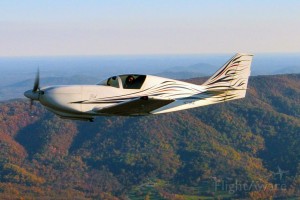Since the dawn of aviation in the early 1900’s, many new and innovative aircraft have taken to the skies. With goals of safety, speed and endurance on the minds of designers and engineers, regulations were soon developed to control the quality and safety behind each aircraft. Aircraft soon became structured under two categories: standard or special.
control the quality and safety behind each aircraft. Aircraft soon became structured under two categories: standard or special.
A standard certified aircraft and its parts are factory built and go through many procedures to ensure the design adheres to FAA standards. Standard certified aircraft include the following categories:
- Normal
- Utility
- Acrobatic
- Commuter
- Transport
- Manned free balloons
- Special classes
The popular fixed wing training aircraft fall into the normal and utility standard category such as the Cessna 150, Cessna 182 or the Piper Cherokee get preferred rates from insurance carriers. These are rates that the insurance underwriter will offer at lower premium amounts than other aircraft due to ease of parts availability and a long and stable safety record.
Aircraft can also be certified under a Special Airworthiness certificate. These categories include:
- Primary
- Restricted
- Multiple
- Limited
- Light Sport
- Experimental
- Special Flight Permit
- Provisional
Although still regulated by the FAA, experimental (amateur built or kit-built aircraft) are very popular because they offer owners & builders more flexibility in the technology and parts that can be utilized in their airplanes and helicopters. However, since these aircraft are not factory built, many models are more unique and not standardized; therefore the cost of repair for these experimental aircraft can be more expensive than a standard aircraft.
No matter the category your aircraft may be registered in, agents at Aviation Insurance Resources (AIR) are ready to shop all the major insurance markets that are most competitive for your type of aircraft insurance risk.
To find out more about obtaining the best rate for your aircraft insurance, please contact Aviation Insurance Resources by calling 877-247-7767 or visit AIR-PROS.com today to receive your free Aircraft insurance quote!
You can also follow us on Facebook, Twitter, LinkedIn, Pinterest, and Google+.
 The gyroplane, also known as an autogyro or gyrocopter made its mark early in aviation history, first flown in January of 1923. Since then, gyroplanes have been catching the hearts of pilots around the world. Amelia Earhart even had to get in on the action, breaking a women’s world altitude record in a gyroplane in 1931. With the ability to fly as a helicopter including STOL (short take-off and landing) and float capabilities, the gyroplane is a unique class of aircraft offered in the aviation market that includes that “rotor wing flying” experience. To properly protect a gyroplane, an insurance agency knowledgeable in the rotor wing industry is a must. That company is Aviation Insurance Resources (AIR).
The gyroplane, also known as an autogyro or gyrocopter made its mark early in aviation history, first flown in January of 1923. Since then, gyroplanes have been catching the hearts of pilots around the world. Amelia Earhart even had to get in on the action, breaking a women’s world altitude record in a gyroplane in 1931. With the ability to fly as a helicopter including STOL (short take-off and landing) and float capabilities, the gyroplane is a unique class of aircraft offered in the aviation market that includes that “rotor wing flying” experience. To properly protect a gyroplane, an insurance agency knowledgeable in the rotor wing industry is a must. That company is Aviation Insurance Resources (AIR).





